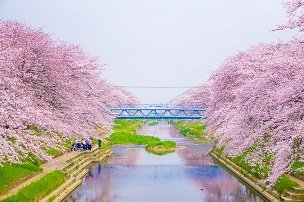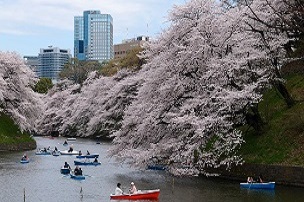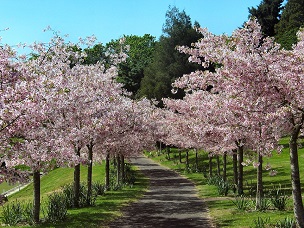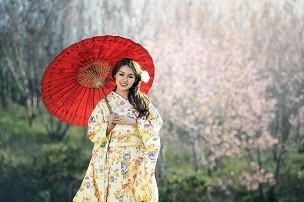Hello, this is TORA.
The season for hanami (cherry blossom viewing) is fast approaching.
More and more foreigners in Japan are keen to participate in hanami.
So, this time I would like to tell you about the highly Japanese cultural phenomenon that is “hanami”.

What is hanami?
It is said that the aristocracy of the Heian period loved cherry blossom as the flower that represented Spring, and in celebration of it would compose odes and hold banquets.
The flower viewing feasts held by Emperor Saga are considered to be the origin of the hanami party.
The hanami feast held by Toyotomi Hideyoshi in the Azuchi–Momoyama period is said to have been so lavish that it was talked about even amongst the peasantry.
Later, in the Edo period, the Tokugawa shogunate planted many cherry trees so that the common people could also enjoy the blossoms.
Incidentally, it seems that the Yoshino cherry, which makes up 80% of the cherry trees in Japan, was planted in this era.
The quick growing Yoshino was rapidly planted all over the country and became Japan’s principal cherry tree.
There are a number of other flowers that bloom beautifully in this season, such as those of the peach and field mustard, but when it comes to flowers, it is the cherry blossom that Japanese people think of. These days, hanami means sakura (cherry blossoms).

The meaning of hanami
In the Nara period, which preceded the Heian, hanami was more of a holy event than one to enjoy the beauty of flowers.
There is a theory that the word “sakura” derives from a combination of the “sa” in Sagami, the god of rice fields, and “kura”, which means the place where the god sat.
Also, because the trees bear their flowers as the weather starts to gradually get warmer, the blooms were valued as an indication that rice planting should begin.
Furthermore, the blossom of plum trees, which used to be the focus of hanami parties before cherry blossoms, is also known as “harutsugegusa” or “herald of spring’s arrival” as it is said to usher in the season.
In an age that did not have the techniques to precisely measure temperature that we have today, plum and cherry blossoms were crucial to evaluating when to plant the fields.

In summary
How about that? As you can see, Japan’s much loved Hanami is a wonderful part of its culture.
I hope that this article has deepened your understanding of hanami, and that it will give a new flavor to your hanami festivities this year.
That’s all for today.
Otsukaresama deshita

